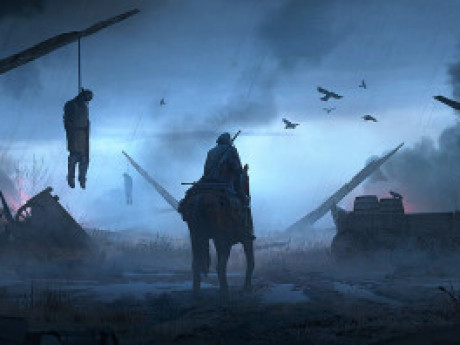The Walking People
The Atsigani are an old people in Arcadia whose origin is much debated among the other races. There are many different theories about their origin including that they are an offshoot branch of the Odiser, that centuries ago turned their back on the rigid nomadic movements that the tribes undertake along the Odsier Steppes following the great herds.
They are unique among all races in Arcadia, because they don't identify themselves with a territory nor they have a tradition of an ancient and distant homeland from which their ancestors migrated from. They don't claim the birth right to any of the lands where they travel through. Rather, the Atsigani identity is bound up with an ideal of freedom, expressed, in part, in having no ties to a homeland nor to a liege.
Without a written history meant that the origin and early history of 'The Walking People' as they are known, has long been an enigma. Ozainae origin is often suggested on linguistic grounds and even religious similarities with some of their traditions and the Desert Septs faith known as 'The Wandering', however, these deductions are often denied by the Atsigani themselves who see need to label their origin as a deep insult.
However it is physiologically clear that the 'Walking People' have a common ancestry that has eventually split into multiple socially divergent and geographically dispersed groups. These social groups travel Arcadia, peddling their wares, trading, offering their services and are more common in Western Arcadia, however a few are known to roam between the lands of the Odsier, Fang and the Great Desert of Skulls.
Gra'akast scholars have found one of the first written references to the Atsigani, dating back from the Third Incarnation of the Seer Locust, from a era during a time of famine and the hunting of the demon worshipers known as Neph-Kin. Old scrolls claim that a group of this people helped hounding the mould-people with their 'knowledge of magic and alchemy'. Now they are seen as itinerant fortune tellers, palmer readers, silver-tongues, jugglers, fire-eaters and witches, who never stay in one place for long,
The 'Walking People' rarely or never stop in one place for more than thirty days, but always, as if cursed by wandering lust, are nomad and outcast. After the thirtieth day they wander from field to field with small, oblong, black, and low tents and horse or donkey pulled caravans, and from cave to cave, until they find a new place to settle on or their services are needed. They are incredibly adept at learning and speaking different languages and dialects.
This wandering and lack of social cultural ties with other races makes the Atsigani seen with distrust and concern. They are often associated with thieving, child snatching, failed crops and bad luck. However their unique music, performances and general travelling shows are often truly appreciated by their audiences. They are adepts at mimicking the predominant culture of the lands they pass through in an attempt to minimise conflict.
Some Atsigani also act as couriers of news across vast distances and recount tales of what is going on in the world at large in exchange for coin.
